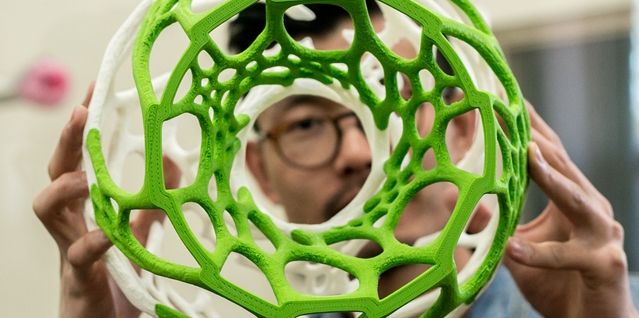
Robots rarely get a good press. They’re either turning rogue, trying to control the human race as in The Matrix, or wreaking a path of destruction to kill the hero in Will Smith’s I, Robot.
What if there was an environment where robotics and automated technology genuinely made a difference?
A world where humans were still very much in charge, but in which robotic devices made life and culture richer and more enjoyable. Where advances in science made medical procedures easier and where laborious and unpopular tasks were carried out by automatons rather than people?
Robotic technology will ultimately be of greatest use to mankind when it is enhancing our lives; improving our health by advancing medical technologies and showing us never before seen parts of the world.
The vision
This approach forms the basis of thinking every day at Leeds, developing robots able to go places humans do not want to, or cannot go.
A government-funded centre is putting Leeds at the forefront of robot design and construction, with our EPSRC National Facility for Innovative Robotic Systems based in our School of Mechanical Engineering.
The facility team regularly work closely with other schools within the University, especially the School of Computing.
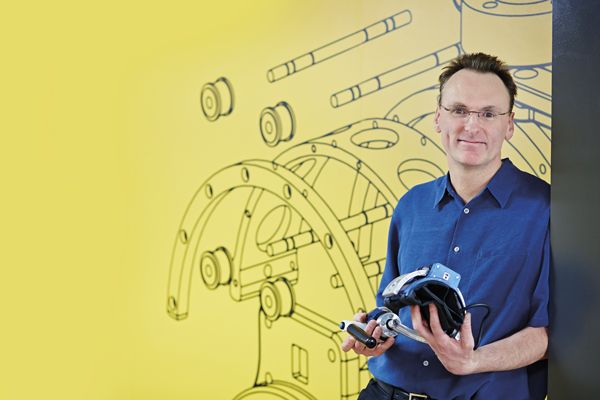 Professor Martin Levesley at the EPSRC National Facility for Innovative Robotic Systems
Professor Martin Levesley at the EPSRC National Facility for Innovative Robotic Systems
Advancing medical technologies
Miniature robots capable of functioning inside the human body could lead to major advances in how illnesses are treated and people cared for.
They could potentially ease painful procedures or giving doctors a better insight into how diseases have affected individual organs.
Hydro-colonoscopy
From talented PhD students to professors, researchers are working on a number of projects.
One example includes a tiny device to offer a more patient-friendly colonoscopy, to help in the fight against one of the world’s most common cancers - colorectal (bowel) cancer.
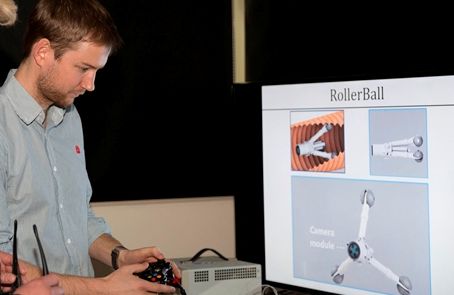 PhD student, Joe Norton, working on the novel robotic hydro-colonoscopy
PhD student, Joe Norton, working on the novel robotic hydro-colonoscopy
This self-propelled ‘microbot’ has reached the stage of a fully functional prototype – a novel robotic hydro-colonoscopy unit designed to ease what is often an uncomfortable procedure and increase the uptake of colonoscopies to help with the early diagnosis.
Other ideas being considered or developed at the University include intelligent prosthetics and exoskeletons, as well as a camera-carrying robot inserted into a body to improve intra-abdominal surgery - it provides doctors with an inside view.
Stroke rehabilitation
A team of PhD students supported by Professor Martin Levesley have developed a portable assistive system called ‘MyPAM’.
Designed to help stroke survivors improve arms function and rebuild their strength, it guides their arm in a regular horizontal motion, similar to stirring a cake mix.
Their creation paves the way for a new model of physiotherapy, keeping professionals in touch with a patient’s progress with intensive remote rehabilitation programmes.
It eases stretched community services and relieves patients of some of the daily grind of solitary exercise and attending clinics.
Researchers have also constructed a novel robotic human-like arm called ALAN (Advanced upper-Limb Autonomous Neuro-rehabilitation), to test the MyPAM device.
This can also be programmed to carry out other manoeuvres.
Its operating system is controlled using a mathematical model of a human arm.
The forearm and hand were created using the University’s 3D printer, one of the largest multi-material printers in the world, to individually create each ‘bone’ in the hand which were then connected together, before it was put to use on the arm.
Project ALAN has reached the finals of the National Instruments Student Design Competition this year, presenting the ALAN project to industry leaders and specialist journalists.
Exploring and improving our world
Flexibility of size and design, coupled with ingenious materials which can be individually designed and manufactured, means robots can crawl, roll or climb into spaces impossible for people to get to.
With advances in photographic technology, tiny cameras can be carried, and precision engineering means they can be programmed to cut, scrape, fill, dig or apply substances.
These advances are paying dividends for the engineering community.
Exploring the great pyramids
One of Leeds’ most inspiring project to date saw the use of a robot to explore the great pyramids of Giza, Egypt.
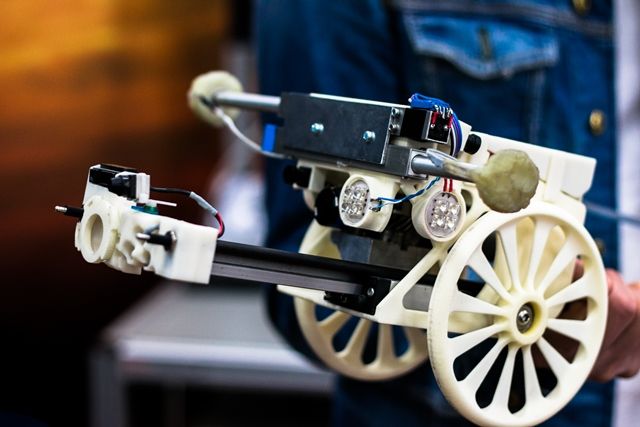 The Djedi robot, part of the archaeological expedition
The Djedi robot, part of the archaeological expedition
Developed by a team led by Professor Rob Richardson, the robot was capable of climbing 70 metres within confined spaces of just 20cm by 20cm.
It successfully navigated the southern airshafts of one of the pyramids and used snake cameras to reveal Egyptian hieroglyphics unseen since the pyramids were built.
The 4,500 year old art provided experts with clues on how the pyramids themselves were constructed.
In addition, the robotics team is currently working with many national and international partners to better understand and protect historical structures.
Repairing our cities
A visionary project is investigating use of robotics technology towards self-repairing cities.
The project, led by Professor Purnell in collaboration with Leeds City Council, sees the development of autonomous robot fixers which could detect and fix problems, like potholes and street light issues, before they become serious issues.
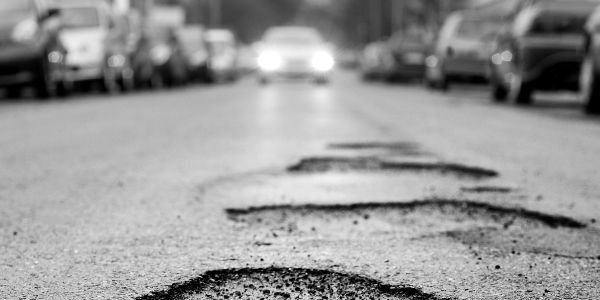 Professor Purnell said: “We want to make Leeds the first city in the world to have zero disruption from street works.
Professor Purnell said: “We want to make Leeds the first city in the world to have zero disruption from street works.
“We can support infrastructure which can be entirely maintained by robots and make the disruption caused by the constant digging up the road in our cities a thing of the past.”
These small machines would be self-controlling and could ‘live’ and charge themselves from lamp-posts. Some could be air based, similar to existing drone technology, while others would be land-based.
Similar robots could work under our streets, fixing issues with utility services like electricity cables or gas and water pipes. Doing so could reduce the need to close and dig up roads to allow for surface based repairs.
This project was launched with £4.2million of funding from the Engineering and Physical Sciences Research Council (EPSRC) and will work in collaboration with University College London, and the universities of Birmingham and Southampton.
The funding was announced by Universities Minister Jo Johnson, who also came to visit the National Facility for Innovative Robotic Systems last year.
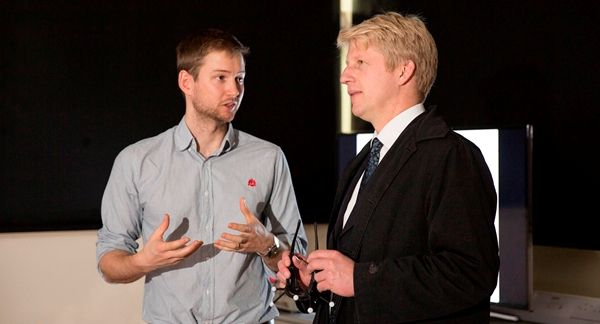 Universities Minister Jo Johnson with Joe Norton
Universities Minister Jo Johnson with Joe Norton
Understanding global warming
Robots are also exploring the world to try to understanding how global warming is affecting it.
A team of five MEng engineering students have created a small lightweight robot carrying sonar technology designed to skim the surface of water courses.
The ‘Bathybot’ resembles a catamaran and can be transported worldwide due to its size and design by a team of glaciologists.
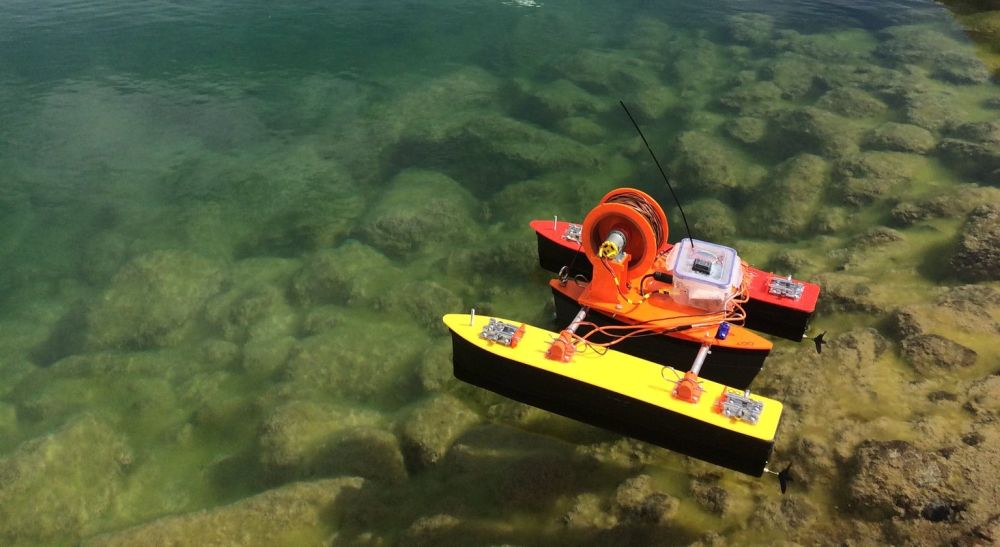 The sonar boat, designed by MSc students
The sonar boat, designed by MSc students
Its most recent mission has seen it travel to Nepal to sail over ‘melt pools’ of glacial lakes which have unfrozen, to measure depths and collect other data which the team, from the University’s School of Geography will analyse to improve understanding of global warming.
Cutting edge technology
The University’s future plans for robotics research includes developing more advanced ways to manufacture robots so they can be created cost effectively and have more precision ability.
Among the most advanced design and manufacture equipment in the UK, work is greatly enhanced by the School of Mechanical Engineering’s 3D printer and 3D visualisation suite.
A project is currently running to improve the capability of the 3D printing equipment by creating new processes with multiple movement ability to improve flexibility and to print onto or around existing components.
“There is a real feeling within our team of ‘what’s next?’”
Professor Rob Richardson, Director of the University’s National Facility for Innovative Robotic Systems said: “There are so many applications which robotics can have now and in the near future, as well as the two very practical fields of medical technology and exploration that we work in here at Leeds.
“It’s inspiring for anyone joining the sector now as a student or a researcher to think they could be a part of one of the biggest leaps forward in technology since the industrial revolution or the invention of the first computers.”
“What will the latest advancement be, whether it’s automated vehicles to self-controlling lawnmowers or equipment to assist in complex medical operations?”
In practical terms, what’s next is the appointment of professors Shane Xie, Chair of Rehabilitation and Medical Robotics, and Pietro Valdastri as Chair in Surgical Robotics. These new appointments will significantly expand the already world class medical robotics research in the Faculty of Engineering.
UK Robotics Week
Leeds’ search for knowledge and a better world, aligns perfectly with UK Robotics Week (25 June – 1 July 2016), launched by the Engineering and Physical Sciences Research Council.
“We are near to realising a world where machines not only address laborious, repetitive or dangerous tasks on our behalf, but one where they act cooperatively with each other and us, drawing on knowledge and experience to learn and take decisions.”
Its intention is to promote greater understanding of robotic research and construction and aims to inspire school-aged engineers to understand the scope of the field and to consider degrees or jobs in the sector.
Through our research at Leeds, the University is helping our world head towards a future where robots will help us live happier, healthier and longer lives. We will explore and discover the unknown both in the development of new robotic devices but also from the world around us.
Further information
EPSRC National Facility for Innovative Robotic Systems
Contact the University of Leeds press office on pressoffice@leeds.ac.uk
Photo: Credit Paul Ellener-Motiv